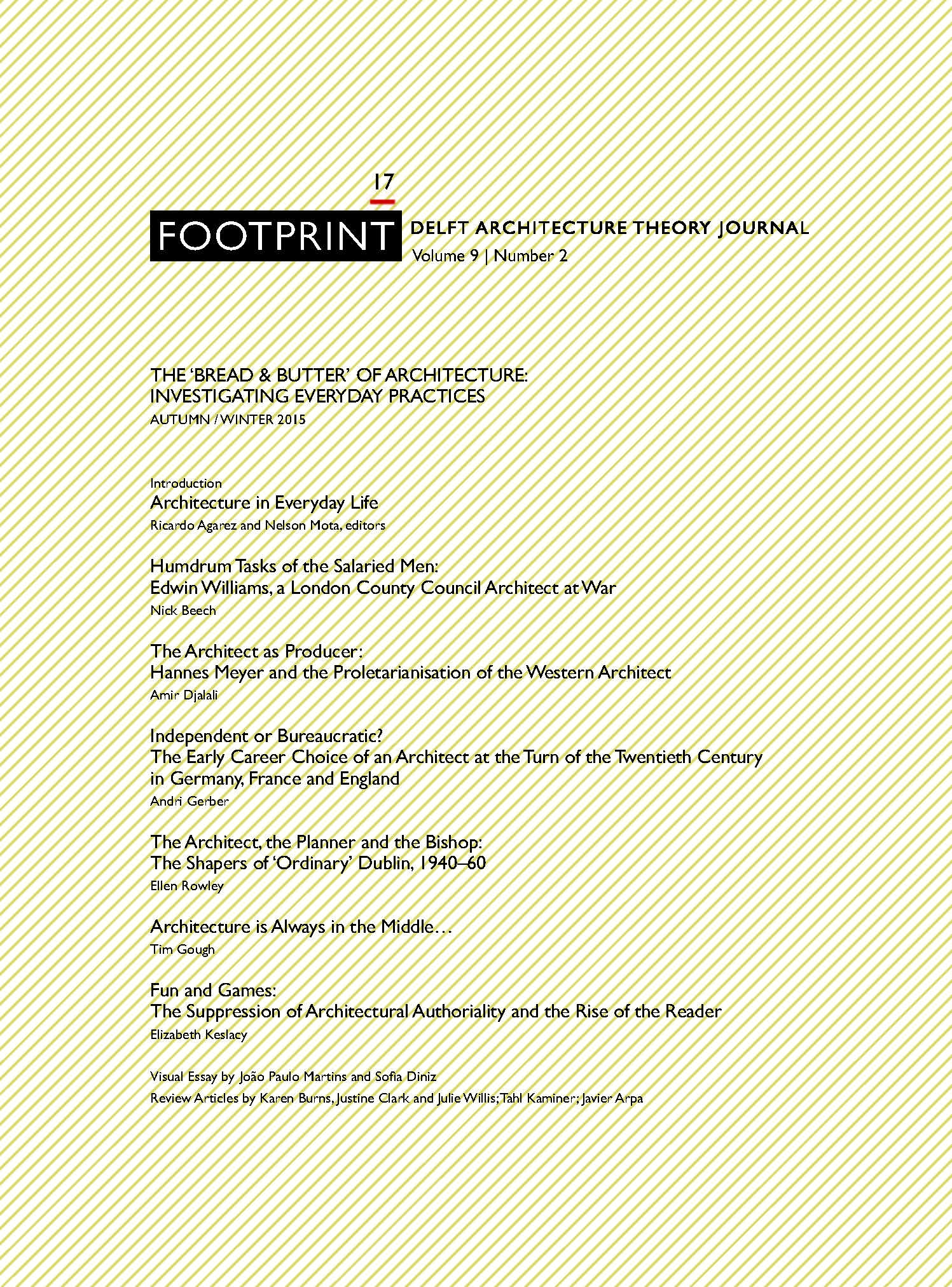Housing and the construction of the city: the Paris Habitat Experience
DOI:
https://doi.org/10.7480/footprint.9.2.995Abstract
In Paris, the history and the evolution of social housing provision merge with those of a centennial institution. Created in 1914, the Office Public d’Habitations à Bon Marché, currently called Paris Habitat, manages more than 1,200 operations, 120,000 housing units inhabited by 200,000 residents. This article reviews an investigation to this exceptional heritage commissioned by the Pavillon de l'Arsenal in Paris, which resulted in the exhibition and catalogue Paris Habitat: Cent ans de ville, cent ans de vie, presented by the institution in 2015.
The investigation, exhibition and publication were organized around the analysis of ten fragments of reality that, rather than matching administrative divisions or urban planning projects, span municipalities, districts and infrastructures. From low-cost to large-scale housing, from concerns with hygiene to ecology issues, each one of the building ensembles analyzed bears witness to the will to change society through housing. Written by the project’s main curator and catalogue editor, this review details the process through which essential questions formulated early on – What is the city we want like? How is it built? – were answered to: selecting from the wealth of material produced by Paris Habitat over one hundred years of activity, the team exposed their political stance on urban strategies at large. Importantly, Paris Habitat’s ‘actions’ substantiated the team’s belief that our knowledge of this long, continuous urban experiment can contribute to improve the metropolises of today and strengthen its ability to answer contemporary concerns: the transformation of offices into housing, new residents’ participation formulas, new building and conception processes, which are key elements in the making of cities that need to be dense, diverse, intense, fertile and agile.
Downloads
Published
Issue
Section
License
- Authors retain copyright and grant the journal right of first publication with the work simultaneously licensed under a Creative Commons Attribution License that allows others to share the work with an acknowledgement of the work's authorship and initial publication in this journal.
- Authors are able to enter into separate, additional contractual arrangements for the non-exclusive distribution of the journal's published version of the work (e.g., post it to an institutional repository or publish it in a book), with an acknowledgement of its initial publication in this journal.



